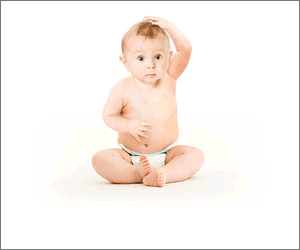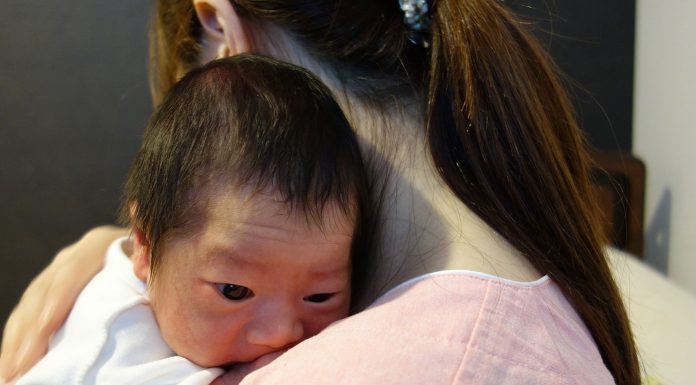On the one hand, it’s simple stuff: keep your hands clean … because on the other hand it could be bacteria that will blight your patient’s recovery at great cost to them and your hospital’s budget.
But the reality is that hand hygiene in our hospitals doesn’t scrub up that well, and keeping your hands clean is easier said than done.
The Hand Hygiene New Zealand (HHNZ) campaign seeks to educate health care workers about not only when, but also why, to use hand hygiene. The Health Quality & Safety Commission-funded campaign includes a national auditing programme to see how many hand hygiene opportunities are taken, or missed, and what impact this has on common health-care associated infections.
Finding out just how often they’ve skipped cleaning their hands comes as a shock to many nurses, says infection control nurse Christine Sieczkowski. She is Infection Prevention & Control Coordinator for Auckland District Health Board – the DHB contracted to deliver the national hand hygiene programme since its first beginnings back in 2008.
Sieczkowski says hand hygiene has always been core business for infection control nurses, but up until now, programmes were ad hoc up and down the country and often took a back seat as already stretched teams coped with infection outbreaks and other competing clinical issues.
And hand hygiene is a topic many people dismiss as old hat.
“Yeah, hand hygiene … what else can you tell us about hand hygiene? How hard can it be?” is not an uncommon response, says Sieczkowski.
Shock at initial results
When a baseline audit revealed Auckland DHB health care workers were cleaning their hands only about a third of the time they should be, it came as a shock to many.
But not to Sieczkowski and her auditor team, who knew from the international literature that initial compliance rates were likely to be low.
The baseline audit was just that – finding out the level of hand hygiene compliance, prior to educating staff why and when they should be carrying out the World Health Organisation’s Five Moment for Hand Hygiene (see box).
That audit was also prior to ensuring alcohol-based hand gel dispensers were attached to each and every patient bed – so health care workers don’t have to waste time hunting for the closest gel dispenser.
Sieczkowski says with 56 wards to equip, this was no simple task, with the first lengthy obstacle being tendering for a quadrupling of hand gel dispensers and gel. The second was keeping gel bottles firmly attached to the patient’s bed, so they didn’t mysteriously disappear when orderlies wheeled a patient to surgery or radiology.
“We kept joking that there must be a black hole somewhere swallowing up all these missing bottles.”
The effort to educate and make easier compliance to the ‘five moments’ has made its mark.
An evaluation three years down the track of Auckland’s pilot HHNZ programme (as published in a recent New Zealand Medical Journal article) showed hand hygiene compliance had risen to 60 per cent, and at the same time, the reduction in Staphylococcus aureus bloodstream infections was statistically significant.
The HHNZ programme has since been rolling out around the country, with the 20 boards now at various level of implementation – some still struggling to get gel at every bed and others with more established programmes and experienced auditing teams.
Seventeen out of 20 DHBs took part in the last quarterly hand hygiene audit, with national compliance results averaging 62.3 per cent (compared to 75.7 per cent in Australia, which has a more longstanding campaign and is the origin of our auditing system).
Joshua Freeman, an Auckland DHB microbiologist and clinical lead for HHNZ, says there is a growing body of evidence that actually following the WHO ‘five moments’ makes a real difference to patient outcomes.
“But it requires a culture change, as people not only need to know what to do, but they also need to know why it’s important and believe in it.”
So how dirty are our hands?
Getting that culture change takes different strokes for different folks.
Sieczkowski says nurses – ever practical – want visual, physical proof of exactly how dirty their hands are.
“So we plate up the agar plates, get them to put their fingers on their plates and see what grows in the lab.”
This is pretty effective in convincing them their hands aren’t squeaky clean.
Also effective is getting nurses to use a ‘glow’ hand cream, wash their hands like normal, and then put their hands into an ultra violet light box. Any cream left on will let off a tell-tale glow, revealing weaknesses in their hand hygiene technique.
It literally highlights the areas most likely to get neglected like around the thumbs, wrists, under fingernails, and between fingers. Sieczkowski says it also brings home the message about why jewellery wearing is discouraged.
Doctors are more sceptical. They want research-based evidence on why they need to clean their hands so frequently. They also regularly score well below nurses in their hand hygiene compliance (see sidebar).
Freeman says there is a misconception amongst some in the medical profession that the call for hand hygiene is nurse-led hype and isn’t based in hard science.
“A lot of my work is to try and explain that there’s a very compelling scientific rationale to performing hand hygiene,” says Freeman.
It’s also very important to get senior medical staff on board to champion hand hygiene.
“Positive role models can have a hugely positive, but negative role modelling, and a publicly dismissive kind of statement, can also have a very negative effect on the hand hygiene practices of more junior colleagues looking up to their seniors.”
Flash mobs and league tables
The trick is not just to improve hand hygiene compliance but also to keep improving and not slip back into complacency.
This is where Louise Dawson comes in, a registered nurse turned baby product entrepreneur, who in January brought her marketing expertise to a new role as Auckland DHB’s first dedicated hand hygiene coordinator.
Dawson is ready to use emotive appeal, league tables, inter-ward rivalry, peer pressure, and afternoon tea bribes – as well as science and statistics – to improve hand hygiene compliance.
This year, she even injected some fun into International Hand Hygiene Day by launching a flash mob on an unsuspecting lunchtime crowd at Auckland Hospital. About 50 volunteers had several lessons with a local dance studio before “throwing their hands up in the air” to 2010 smash hit Dynamite.
“It created quite a buzz around the hospital,” says Dawson.
A major focus of her job is motivating the ten high risk wards for infections, which are audited quarterly for the HHNZ national compliance audit, to improve their compliance rates, including training one or two hand hygiene observers (or champions) per ward.
Dawson’s resource toolbox includes a video (of an ex-patient sharing their real life story of having a hospital-acquired bloodstream infection) that pulls an emotional punch and cold hard statistics on what such infections cost the hospital.
Another powerful motivator is competitive rivalry, and she used the last quarterly audit results to rank and compare the combined scores of nurses, doctors, and other health care workers across the ten wards.
“That’s a first for ADHB. We’ve never really done league tables,” says Dawson “But it’s been a real driver for change.”
The ward doctors at the bottom of the league table were very sceptical of the auditing process, opening up an opportunity for further education.
“But those doctors, nurses, and health care workers at wards that got the best results weren’t sceptical at all.”
Her overall approach is working, with the six wards she has worked with to date having a 25 per cent increase in compliance in the latest audit. This, in turn, brings up the whole board’s compliance rates.
With the board having gone through a particularly tough May and June – leading to nurses managing a lot more patients and a lot more being asked of them – she is also aware hand hygiene can sometimes slip because of barriers like multiple pressures on nursing time.
Stretched resources and auditing demands
Another passionate believer in the HHNZ project is Jo Stodart, charge nurse manager for infection prevention control at the Southern District Health Board.
Like Sieczkowski, she has been trained to platinum auditor level by Hand Hygiene Australia – just one of six in New Zealand – to ensure that all auditors trained across the country use the same consistent standards.
And like Dawson, she knows each organisation can come across barriers or challenges – temporary or more complex – to improving and maintaining their hand hygiene compliance, including competing priorities for quality initiatives.
She says for her small infection control team, the hand hygiene culture change campaign has to be part of business as usual, including labour intensive audits each quarter of the national reporting wards.
Auditors have to pop in and out of wards at different times of the day, keeping a watchful eye out for each hand hygiene “opportunity” (missed or taken) to get their quota of moments. In the last national audit, 21,660 moments were observed across the 17 boards.
“They say it takes a minute a moment,” says Stodart.
She thinks this is probably a conservative estimate and those 20,000 plus moments represents many, many hours of auditors’ – mainly infection control nurses’ – time.
It is also represents a lot of hand cleansing by busy health care workers – a level logistically impossible before the advent of convenient and effective alcohol-based hand gel. Dawson says a rough rule of thumb is roughly 70 per cent hand cleaning with alcohol rub to 30 per cent old-fashioned soap and water.
Sieczkowski says having moisturiser in the hand gels also means they are well tolerated.
“I could count the people on one hand who have gone to occupational health with problems.”
Stodart is not so sure and believes it may be an under-reported issue.
The passionate hand hygiene advocates are all united in backing a culture change, which is simple in concept if more complex in reality, that can make such a difference to patient safety.
“We’re always keeping in sight the patient in bed who hopefully won’t get a hospital-acquired infection,” says Stodart.
“It needs to be just as automatic as putting your seat belt on.”
So why clean hands so often?
The rise and rise of antibiotic resistant super bugs is a major driver behind hand hygiene campaigns internationally.
Evidence that a successful hand hygiene “culture-change” campaign in Victoria significantly reduced blood stream infections from methicillin-resistant Staphylococcus aureus (MRSA) was behind the launch of the national Hand Hygiene Australia campaign that the New Zealand campaign is built on.
Another motivator is the crude dollar cost to the health care system of preventable health care associated infections (HCAIs) from all bugs, including everyday Staphylococcus aureus.
Joshua Freeman says decade old data conservatively estimates the cost of HCAIs in order of $140 million. Then there is the personal cost to the patients’ themselves.
“If you want to look at it purely in financial terms, the arguments there, but if you want to look at in humanitarian terms, I think it’s the right thing to do ethically. We are under obligation to do this for our patients,” says Freeman.
“There’s still a mentality out there that HCAIs are the inevitable consequences of modern health care and they can’t be prevented as ‘oh well, the person was very old’ or ‘the person was very sick’ or ‘they had to have a line in’ and their infection was unavoidable.”
However, evidence shows that simple interventions like hand hygiene can put a huge dent in infection rates.
Both the Australian and New Zealand campaigns are built on Five Moments for Hand Hygiene. These aim to not only prevent bacteria spreading from one patient to another but also to stop transmitting a patient’s own bacteria from one site to another like, for example, from a contaminated catheter to an infection-vulnerable site like an IV cannula. This has led to the ‘moments’, stressing the need for hand hygiene before and after procedures, including contact with any indwelling device.
The fifth ‘moment’ highlights the fact that a patient’s immediate surroundings become contaminated with the patient’s bacteria, so if their chart is picked up, their locker shifted, or their bed remade, nurses are being exposed to bacteria and need to clean their hands.
The risk of contamination is always heightened by the chance the bacteria is antibiotic resistant. Freeman says some of these bugs are becoming virtually untreatable, and there is little commercial incentive for drug companies to develop new antibiotics to counter them if a resistant variant quickly emerges.
“It makes sense that we change our focus from treatment to prevention (of infections) and we increase our efforts and raise the bar to prevent them as the stakes have become higher,” says Freeman.
How well are we doing?
• Nationwide nurses are cleaning their hands 65 per cent of the times required (i.e. missing 35 per cent of the potential 13,000 plus hand hygiene moments observed by auditors).
• This compares to 57 per cent compliance by medical practitioners, 64 per cent by health care assistants, and 72 per cent by phlebotomists.
• Health care workers FAIL to perform hand hygiene TWICE AS OFTEN when WEARING GLOVES as when not wearing gloves (38.3 per cent compared to 18.4 per cent).
• Health care workers are most likely to carry out hand hygiene AFTER touching a patient
(71 per cent) than BEFORE touching a patient (56 per cent).
• Nearly double the number of district health boards (up from 9 to 17 DHBs) submitted audit data in the latest quarter than the previous quarter.
• DHBs are all at different stages of implementing the national hand hygiene programme and compliance rates range from 38.4 per cent to 73.7 per cent.
• National collecting of health care associated Staph. aureus bloodstream infection rates is also now underway.
Source: National Hand Hygiene Compliance Audit June 2012.
Quality and Safety Marker Launch
Keeping infection rates down in hospitals is one of the new Quality and Safety Markers soon to be officially launched by the Government.
The markers have been developed by the Health Quality & Safety Commission and will focus on reducing harm in four critical areas:
• Health care associated infections (also known as hospital acquired infections).
• In-patient falls.
• Surgery.
• Medication errors.
Details of the markers will be reported publicly and regularly. HHNZ clinical lead Joshua Freeman says the new markers will help focus attention on the importance of hand hygiene.





















